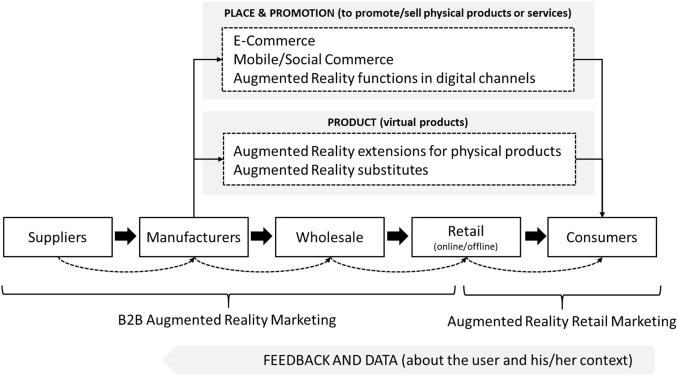Top 7 Future Trends in Digital Learning Environments: What to Expect Next
As technology continues to infiltrate every facet of our lives, education is no exception. Digital learning environments are rapidly evolving, offering innovative ways for learners and educators to interact and collaborate. Keeping pace with the latest trends is essential for staying competitive and ensuring quality learning experiences. In this article, we explore the top 7 future trends in digital learning environments, shedding light on what you can expect in the coming years. Whether you’re an educator, student, or an association, these insights will help you make informed decisions and prepare for the next phase of education technology.
Benefits of Advancing Digital Learning Environments
- Enhanced personalization for individual learning paths
- Greater accessibility and inclusiveness for diverse learners
- Improved engagement through multimedia and gamified content
- Flexible, self-paced learning opportunities
- Real-time analytics for measurable progress tracking
Top 7 Future Trends in Digital Learning Environments
-
1. Artificial Intelligence (AI)-Powered Personalization
harnessing the power of AI in education is set to transform digital learning environments. AI-driven platforms can analyze student data, adapt content, and provide personalized recommendations. Expect to see:
- Intelligent tutoring systems that adapt in real-time
- Automated grading and feedback for instant insights
- Customizable modules based on learning styles and pace
Example: Tools like Coursera and Squirrel AI Learning utilize AI algorithms to customize content, helping learners overcome knowledge gaps more effectively.
-
2. Virtual Reality (VR) and Augmented Reality (AR) Integration
Immersive technologies such as VR and AR in digital learning are revolutionizing how complex topics are taught.These tools create hands-on experiences, making abstract concepts tangible.
- Virtual labs and field trips for science and geography
- 3D anatomical models for medical training
- Simulation-based learning for vocational skills
Did you know? According to a 2023 EdTech Magazine report, students retain up to 75% more through VR-enhanced learning compared to traditional methods.
-
3. Microlearning and Bite-Sized Content
As attention spans shrink and busy schedules prevail, microlearning delivers content in brief, engaging segments. This trend makes digital learning environments more accessible and effective by focusing on:
- Short modules that fit into daily routines
- Mobile-first design for on-the-go learning
- Just-in-time resources and quick reference guides
Tip: Platforms like Duolingo and LinkedIn Learning already employ microlearning to boost user retention and learner success.
-
4. Gamification for enhanced Engagement
Gamification is not a new concept, but its future request in digital learning environments will be even more sophisticated. By integrating:
- Leaderboards and achievement badges
- Interactive quizzes and challenges
- Story-driven progression and rewards
educators can drive continuous motivation and participation. Studies indicate that gamified learning can increase engagement rates by over 60%.
-
5. Cloud-Based Collaborative Learning Platforms
The rise of remote and hybrid work is fueling the adoption of cloud-based collaborative learning platforms.These platforms facilitate real-time interaction and teamwork, nonetheless of location:
- Group projects and virtual teamwork spaces
- Shared documents and instant feedback features
- Scalable infrastructure for institutions of all sizes
Microsoft Teams and Google Workspace for education are leading examples, providing the versatility needed for modern, distributed learning environments.
-
6.Data-Driven Learning Analytics
Leveraging learning analytics allows institutions and instructors to make informed decisions and optimize learning outcomes. Expect increased integration of:
- Dashboards tracking student progress in real time
- Predictive analytics to identify at-risk learners
- Personalized feedback loops for continuous betterment
With privacy and data protection at the forefront, analytics will become an indispensable tool in enhancing the overall effectiveness of digital learning.
-
7. Lifelong & self-Directed Learning Ecosystems
The job market’s ever-changing demands have placed a premium on lifelong learning and self-directed study.future digital learning environments will:
- Support flexible credentials, microdegrees, and certifications
- Offer community-driven support and peer-to-peer learning
- Integrate continuous upskilling and reskilling programs
Practical insight: Sites like edX and FutureLearn are expanding their offerings to include stackable microcredentials that foster professional growth over time.
Case Study: A University Embracing the Digital Future
the University of Phoenix recently upgraded its digital learning surroundings, integrating AI-driven personalized learning journeys and immersive VR labs for STEM students. Consequently, the university saw a 40% increase in student retention and a 25% improvement in course completion rates. Faculty report that data analytics have helped identify struggling students earlier, leading to more timely interventions. This real-world example demonstrates the transformative benefits of adopting emerging trends in digital education.
Practical Tips for Adapting to Digital Learning Trends
- Stay curious: Attend webinars and join forums dedicated to digital learning innovations.
- experiment: incorporate microlearning, gamification, or cloud collaboration tools into your regular workflow.
- Invest in training: Educators should seek out professional advancement that covers AI, VR/AR, and learning analytics.
- Focus on inclusivity: Ensure all new technologies are accessible to students with diverse backgrounds and needs.
- Monitor data privacy: regularly audit and update your data security policies as learning analytics become more sophisticated.
Conclusion: Preparing for the Next Wave of Digital Learning
The future of digital learning environments promises personalization, immersion, collaboration, and continuous improvement. By anticipating and embracing these seven trends—including AI-powered personalization, immersive technologies, and data-driven analytics—educators and learners alike can unlock new levels of achievement and satisfaction.Proactive adaptation will ensure your institution or organization remains at the forefront of education’s digital conversion. Stay curious, stay flexible, and get ready to experience the next evolution in education.
To explore more about digital learning trends and related insights, browse our other articles or subscribe for the latest updates in education technology.

